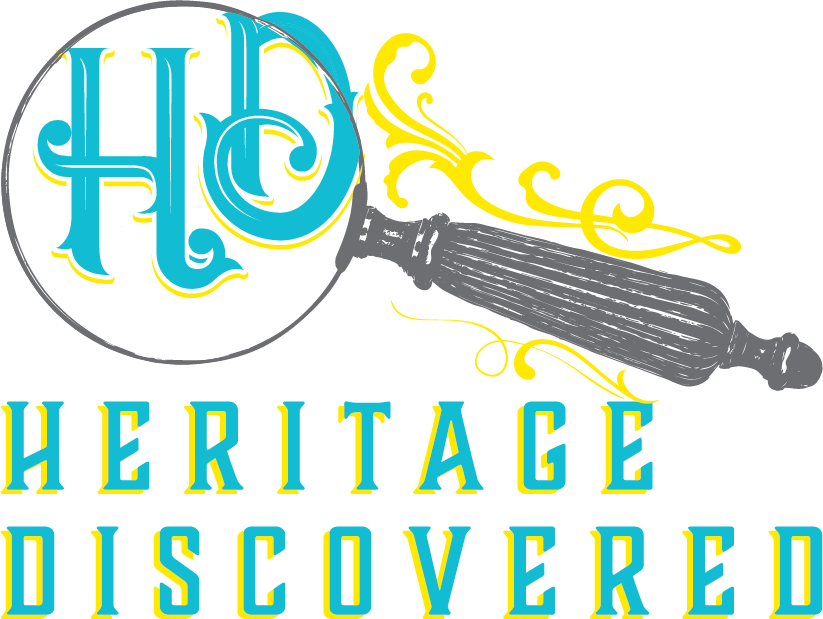Genealogy for Beginners: How to Get Started on Your Search
*This post may have affiliate links, which means I may receive commissions if you choose to purchase through links I provide (at no extra cost to you). All opinions remain my own.
If you’ve ever wondered who your grandparents were before they became your grandparents, or found yourself curious about the names of relatives a few generations back, you’re in the right place. Genealogy for beginners does not have to feel overwhelming. It can be exciting and fun (dare I say even addicting?) when you take it step by step. With the right approach, tools, and a little patience, you can start uncovering family stories that will bring your ancestors to life.
Hi, I’m Jessica. I’m a genealogist, researcher, and your guide here at Heritage Discovered. I help curious family historians take that first step and keep going when the research gets tricky. I’m here to help you uncover your ancestors’ stories without the overwhelm.
In this article, I’ll walk you through exactly how to begin your genealogy research, what tools to use, and the best first steps to take. You don’t need to be an expert to start building your family tree, you just need a little guidance, a few records, and a good dose of curiosity. Let’s get started!
Why Now Is the Perfect Time to Start Your Family History
There has never been a better time to begin your genealogy journey. So many resources are available online, from free databases to digitized collections on major genealogy websites. You can explore records from your own home, whether that means census documents, ship passenger lists, or even old city directories.
That said, the majority of genealogical records are not available online. The rest are still sitting in archives, courthouses, libraries, and historical societies. But one of the most fun parts of the research process is finding treasures hidden away in unexpected places.
Starting now means you can take advantage of the digital collections that exist while also giving yourself time to learn how to request or access archival material. Even if you feel like you don’t know enough to begin, the truth is you already have a lot more information than you think.
What You Need Before You Begin Your Family Tree (and What You Don’t)
One of the biggest misconceptions is that you need fancy software or lots of facts about your family before you can get started. Not true. At the very beginning, you only need:
A notebook or digital file to capture information
Basic details you already know (names, dates, places)
A willingness to ask questions and learn
What you do not need: piles of expensive subscriptions, decades of family papers, or perfectly organized binders. Those things can come later. At the start, your goal is simply to gather and record what you know.
If you are someone who loves having things neat from the start, you may enjoy my Complete Family Story Organizer, which helps you gather all of your family data in one place, including photos and notes. But remember, it’s perfectly fine to begin with just a simple chart and a pencil.
Start with What You Know: Building a Simple Tree
Genealogy for beginners always begins at home, with what you know. Write down your own full name, date of birth, and place of birth. Then move to your parents, adding their names, dates, and places. From there, expand to grandparents, great-grandparents, and so on.
It may feel too simple or even a waste of time to start with yourself instead of the ancestors you want to learn about. But it’s actually an essential step to work from the known to the unknown. This ensures that you’re following the right path as you go, especially if you have more common names in your tree.
At this stage, your family tree will probably have blank spaces. That is okay. Genealogy is all about filling in those blanks, one discovery at a time.
A five-generation family tree chart is a perfect starter tool. It gives you enough room to see patterns without becoming overwhelming. You can download my 5 Generation Family Tree Chart to have a neat, printable pedigree chart where you can jot down these early details.
Interviewing Family and Gathering Home Sources
The next step is often the most enjoyable, which is talking with relatives. Older family members hold memories that no database can provide. Even a casual chat might lead to clues like a maiden name, a story about where someone worked, or the name of a childhood town.
You never know what goldmines you may discover. A friend of mine was given the family bible after offhandedly mentioning he was starting to research their family history! He had no idea that the family bible existed.
Tips for interviewing family:
Start with open-ended questions like “What do you remember about your grandparents?”
Record the conversation if they’re comfortable with it.
Pay attention to small details that could become big clues later.
Beyond interviews, check the resources tucked away in your own home or a relative’s house. Birth certificates, old letters, photo albums, obituaries, and even recipe cards can hold names, dates, or places that help expand your tree.
If you uncover letters or postcards, you will want to preserve them properly. My Letters From the Past guide shows how to store and protect these treasures so they last for future generations.
Using Free and Low-Cost Tools for Early Research
One of the best things about genealogy for beginners is that you don’t need to spend much money right away. Several free or low-cost resources will help you quickly gather information:
FamilySearch.org: A free site with millions of digitized records.
FindAGrave.com: Volunteer-uploaded cemetery records and photos.
USGenWeb Project: Free genealogy resources organized by state and county. Although though many of the pages haven’t been updated for a long time, you can still find gold nuggets of information.
Local libraries: Many offer free access to subscription sites like Ancestry Library Edition.
As you expand, you might choose to invest in paid sites like AncestryDNA or MyHeritage, but it’s not necessary when you are just starting.
To help you stay organized, my Genealogy Records Workbook gives you a checklist of common record types (vital, military, immigration, newspapers, and more), so you know what you have already collected and what is still missing.
Common Beginner Mistakes to Watch Out For
It’s easy to get carried away and add every possible name you find to your family tree. A few things to keep in mind are:
Do not assume: Just because someone has the same last name in the right town doesn’t mean they are your ancestor. Along the same lines, just because a record doesn’t line up exactly with what you know about an ancestor, like their birth year, doesn’t mean that it’s not them.
Cite your sources: Keep track of where each fact came from, even if it is just a note like “Grandma’s story, 2024.”
Check multiple sources: Records can be wrong, so it helps to compare. For example, one census might list a birthplace as Vermont, while another says Canada. Both could still point to the same person.
Avoid the copy-paste trap: Online trees can be helpful, but they often contain mistakes. Always verify details with original records.
I’ve lost track of how many times I thought I had “found” an ancestor, only to realize later the dates or relationships didn’t fit. That is why tools like the Ancestor Timeline worksheet are so handy. They let you lay out life events in order, making it easier to spot inconsistencies.
When and How to Get Extra Help Along the Way
At some point, every family historian hits a roadblock. Maybe you can’t find an ancestor’s parents or you’re struggling to read handwriting in a church register. This is completely normal.
When you get stuck, here are your options:
Ask for advice in genealogy groups: Online communities are full of helpful people.
Dive into archives: Remember, most records are not online. Contact a local archive or historical society in the area your ancestor lived.
Use a guide: My Brick Wall Breakthrough Blueprint is designed to help you analyze your problem, plan next steps, and find overlooked sources.
Hire help: If you want professional support, I offer both done-for-you services and a “Pick a Genealogist’s Brain” session where we work through your specific challenge together.
Moving Forward in Your Journey
Genealogy for beginners is not about racing to the finish line, it’s about building a foundation for discoveries that will unfold for years to come. Start with yourself, gather what you know, and then expand outward. Use free resources, ask family questions, and keep track of your sources.
When challenges pop up (and they will), see them as part of the adventure. Each record, each name, and each clue is another piece of your family’s unique story.
If you’re ready for more support on your journey, I’d love to help! You can book a Pick a Genealogist’s Brain session if you want to sit down together and work through a specific research problem.
If you would rather hand things off, my Done for You research packages let me do the digging for you. Not sure what you need yet? Schedule a free 20-minute consultation so we can talk about your goals and figure out the best next step.
Your ancestors’ stories are waiting. All you need to do is take the first step.




